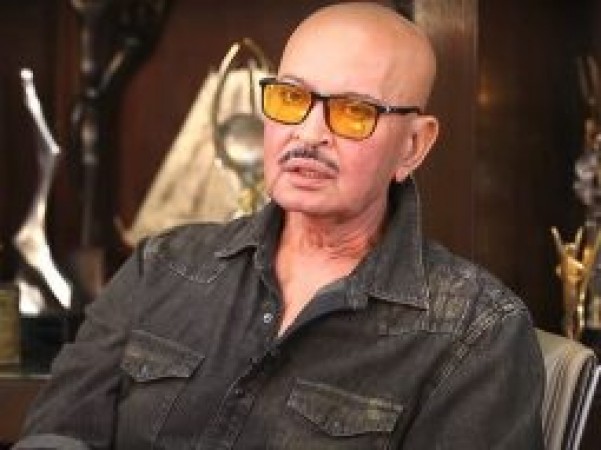
The well-known actor Rakesh Roshan has held a variety of positions over the course of his illustrious career in the Indian film industry. He made an irreplaceable impact on Bollywood as an actor, director, and producer. His propensity for donning wigs, especially during his acting days, was one aspect of his career that frequently went unnoticed. This article will explore the intriguing fact that Rakesh Roshan only wore his natural hair in Khatta Meetha and no other film allowed him to do so. The actor, as well as his followers and the entire film industry, all benefited from this transformation. The motivations behind Rakesh Roshan's habit of donning wigs, the significance of his choice in Khatta Meetha, and its effects on his career will all be covered in this article.
It is crucial to comprehend the reasons behind Rakesh Roshan's decision to wear wigs for the majority of his acting career before delving into the specifics of Khatta Meetha. Roshan, who was born on September 6, 1949, started his acting career in the early 1970s. Leading actors were required to have a specific appearance back then, and Bollywood had high standards for appearances. Roshan was unfortunate because his natural hairline did not conform to these accepted norms.
A receding hairline could potentially hurt an actor's chances of landing important roles in the movies because it could affect their charisma and appearance on screen. Roshan made the decision to wear wigs to hide his receding hairline and keep a youthful appearance because he was determined to make a name for himself in the industry. He was able to land lead roles and establish himself as a versatile actor as a result of this choice.
Basu Chatterjee's comedy-drama film Khatta Meetha was released in 1978. Rakesh Roshan and seasoned actress Ashok Kumar both acted in the movie. The complications brought on by a remarriage within a family were the central theme of the plot. Although the film itself attracted attention for its heartwarming story and top-notch performances, Roshan's decision to go wigless stole the show.
Vikram, a middle-aged man navigating the complexities of family dynamics and relationships, was played by Rakesh Roshan in the film Khatta Meetha. He decided to keep his natural hair instead of donning the trademark wig for this role, which distinguished it from his previous ones. Not just for Rakesh Roshan but for Bollywood actors in general, this daring decision was out of the ordinary.
In terms of his professional trajectory and the state of the Indian film industry, Rakesh Roshan's decision to lose his wig for Khatta Meetha was a significant one. Here's why this transformational act was so extraordinary:
Authenticity: Roshan's choice to show off his natural hair was viewed as a move in that direction. It was a rare occasion when an actor challenged the superficial standards of the business by embracing his true self. Fans and critics alike applauded Roshan's action because it demonstrated that he was comfortable with himself.
Breaking Stereotypes: In Bollywood, talent has frequently been overshadowed by appearances. Roshan's choice upended this perception and provided opportunities for other actors with unusual appearances. It conveyed the idea that talent and acting ability should be the main requirements for success in the field.
Humanizing Characters: His choice to forgo a wig in Khatta Meetha gave the character more nuance and authenticity. He was able to portray a relatable middle-aged man with all the flaws that come with getting older, which made him more endearing to the audience overall.
Redefining Your Career: Rakesh Roshan's career took a turn with the release of Khatta Meetha. His adaptability to various roles and versatility as an actor were demonstrated in the movie. His career experienced a resurgence as a result, opening doors to a wider range of positions and chances.
Rakesh Roshan continued to wear his natural hair in subsequent movies after Khatta Meetha. His popularity increased as well as his actor credibility as a result of this change. Following Khatta Meetha, he appeared in a number of noteworthy movies, such as "Khoobsurat" (1980), "Jhoota Kahin Ka" (1979), and "Shriman Shrimati" (1982), all of which preserved his natural appearance. These movies strengthened his reputation as a versatile performer capable of taking on a variety of roles.
Later in his career, Roshan switched from acting to producing and directing, where he found great success with movies like "Kaho Naa... Pyaar Hai" (2000), "Koi... Mil Gaya" (2003), and the Krrish series. He continued to make significant contributions to the Indian film industry as a director, concentrating on creative storytelling and special effects.
In terms of his career and the larger Indian film industry, Rakesh Roshan's decision to lose his wig for Khatta Meetha was a significant turning point. It represented authenticity, went against stereotypes, and gave his characters more nuance. In addition, it signaled a turning point that paved the way for a fruitful career reinvention. Rakesh Roshan's transformation from wearing wigs to hide his receding hairline to embracing his natural self is not only a remarkable personal change, but also a tale of tenacity and authenticity that continues to motivate both actors and fans. Roshan had the guts to defy expectations and redefine his role in Bollywood, and Khatta Meetha will always stand as a testament to that bravery.
Ten Most Popular Bollywood Icons: A Glance at Elegance, Talent, and Stardom
Deewangi Deewangi: A Bollywood Marvel with 31 Star-Studded Cameos
Salman Khan and Katrina Kaif's Relationship Ended Due to This Single Message